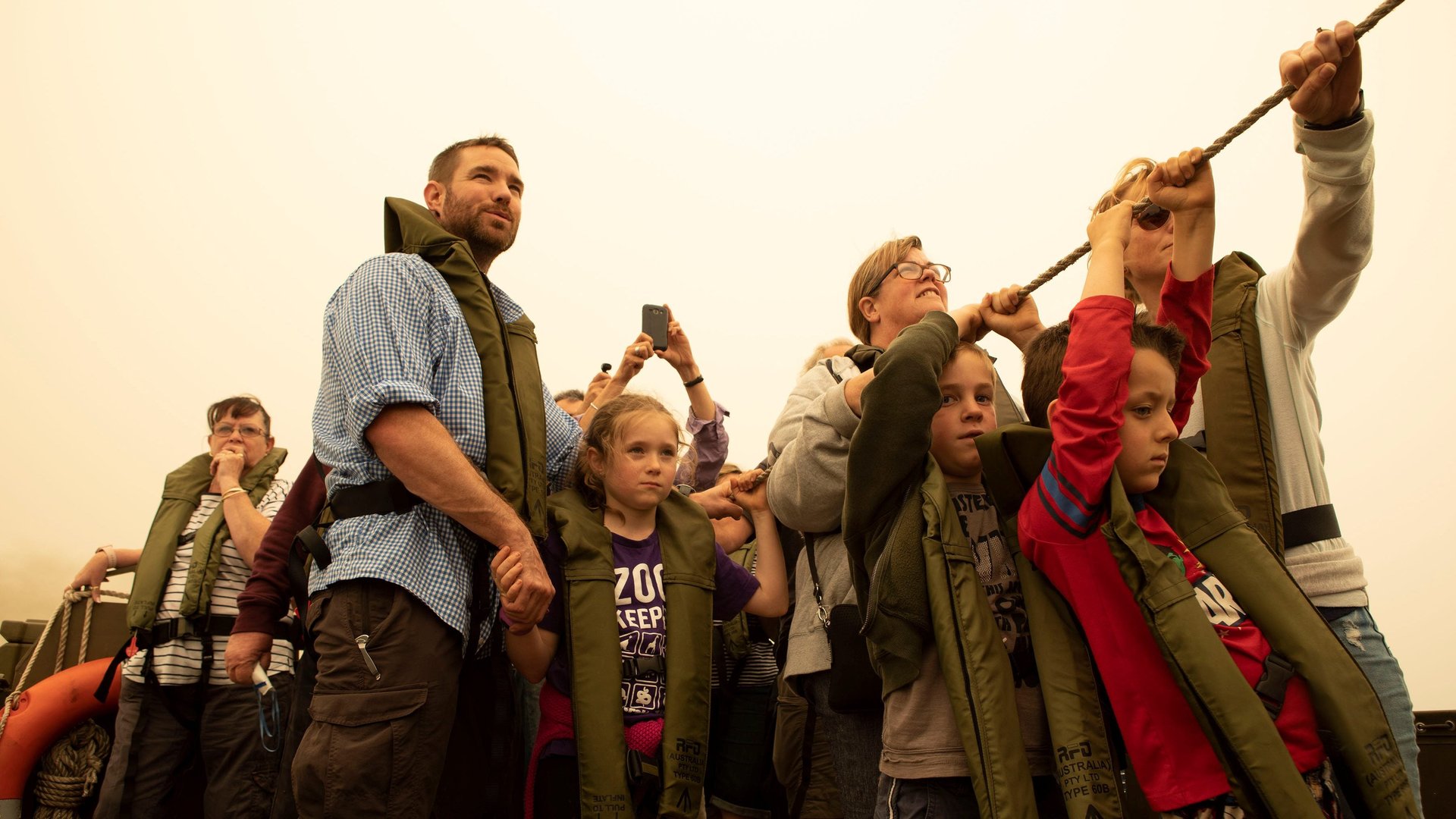“It’s uncharted territory”: How Australia’s fires are impacting children
Every parent knows what it’s like to be stuck inside the house with children on snow days or rainy days, when the weather causes normal life to grind to a halt. But what if the bad weather was a cloud of noxious fumes caused by giant bushfires? And what if the air inside the house was almost as toxic as the air outside? What would you do then?


Every parent knows what it’s like to be stuck inside the house with children on snow days or rainy days, when the weather causes normal life to grind to a halt. But what if the bad weather was a cloud of noxious fumes caused by giant bushfires? And what if the air inside the house was almost as toxic as the air outside? What would you do then?
It’s a question that hundreds of thousands of parents living along Australia’s southeast coast have had to ask themselves over the past few weeks. Some of the worst bushfires in the country’s history have been burning across the states of New South Wales and Victoria, searing 15.6 million acres of land, killing 28 people, displacing thousands, and leading to the death of up to 1 billion animals. The bushfires, which are expected to continue until there is substantial rainfall, come after years of drought in parts of Australia, and an unprecedentedly hot and dry summer. They have been exacerbated by climate change—Australia has warmed by 1°C since 1910—and unusual weather patterns.
The smoke from the fires contains fine particles known as PM 2.5, which are toxic to the human body. This was evident today (Jan. 14), when tennis players suffered from coughing fits and shortness of breath during qualifying matches for the Australian Open tournament in Melbourne. Last week, Australia’s capital, Canberra, had a significantly worse air quality rating than New Delhi or Lahore.
“It’s really devastating,” says Camille Raynes-Greenow, an epidemiologist at the Sydney School of Public Health. “Everyone has been affected by the smoke.” Last week, Ambulance Australia reported a 51% rise in the number of calls to first responders for breathing problems.
But while everyone might be affected, young children are particularly at risk of respiratory conditions caused by exposure to PM 2.5. Since children are smaller, they’re closer to the ground and they breathe more quickly than adults, and through their mouths instead of their noses (which contain a natural filtration system).
Once kids are exposed, the pollutants have a worse impact on their developing bodies than on adults. During the first 1,000 days of life, a child’s brain builds more than one million new neural connections per second. When PM 2.5 particles enter a child’s body, they pass through the respiratory airways and into the bloodstream, increasing the risk of heart, brain, respiratory, immune, and developmental conditions.
Hiran Selvadurai, a clinical professor of pediatrics and child health at The Children’s Hospital in the Sydney suburb of Westmead, says he has already seen the impact of the bushfires on children in the city. Over the past month, there was a 30% increase in children presenting themselves at Westmead’s emergency department with symptoms of asthma. This is unusual, he points out, because asthma and other respiratory conditions usually decrease in the summer months. (Australia is in the Southern Hemisphere and its seasons are the opposite of those in the Northern Hemisphere.) “It’s a time of year when we don’t usually see a lot of asthma in hospital,” Selvadurai explains. And yet “it was easily the busiest Christmas and December I’ve ever had.”
Selvadurai also saw an increase in the number and severity of infections, including empyema, a condition in which pus collects in the lungs, causing symptoms similar to those of pneumonia. There were three cases of empyema at The Children’s Hospital at Westmead in both December 2017 and December 2018; in December 2019, there were six.
Nobody knows how long the risk of severe smoke exposure from the fires will last, but scientists agree that “ongoing exposure is the real concern,” explains Dominic Fitzgerald, a pediatric respiratory specialist at Westmead. Studies conducted in some of the world’s most polluted low-and middle-income countries show that chronic exposure to bad air quality (pdf, p. 12) in children can be associated with an increased risk of asthma, acute lower respiratory infections, damaged lung function, and some childhood cancers.
Fitzgerald cautioned that it’s too early to tell what the long-term impact of the smoke on children’s health will be—or whether there will be any long-term impact at all. “Most healthy kids…can manage fairly well,” he explained, save for relatively mild symptoms such as irritation of the eyes, nose, and throat, as well as a cough. “With intermittent or occasional smoke exposure, one does not expect any long-term consequences.”
“Children are usually incredibly resilient,” Selvadurai concurs, because their bodies are still developing. But “that also comes with a price, because indulging them with inflammation over a significant period of time may well impact on airway growth and long-term health.”
Scientists are cautious about the likely long-term effects of temporary acute exposure to air pollution in Australia, where the air quality is generally pretty good. “We don’t really understand the mechanism of how PM 2.5 impacts health,” Raynes-Greenow explains.
“It’s uncharted territory,” says Selvadurai. “And that’s what’s making us all incredibly uneasy.”
Read more from our series on Rewiring Childhood. This reporting is part of a series supported by a grant from the Bernard van Leer Foundation. The author’s views are not necessarily those of the Bernard van Leer Foundation.